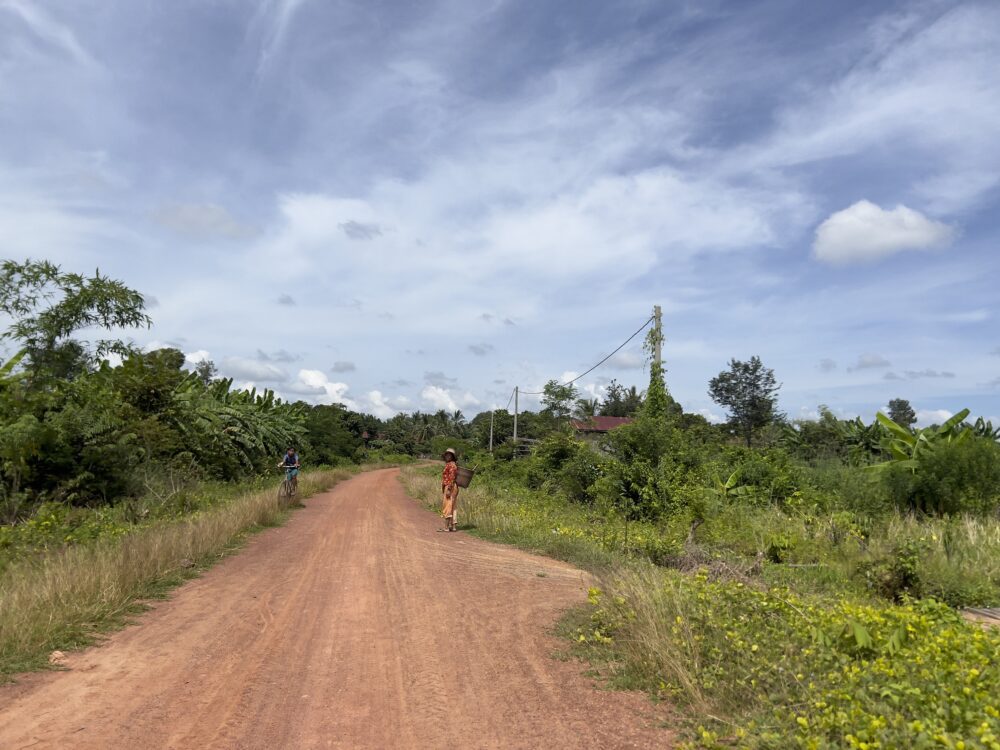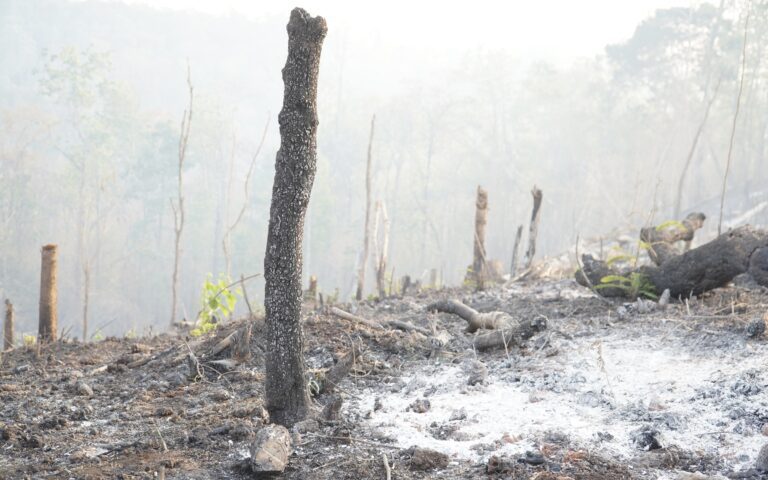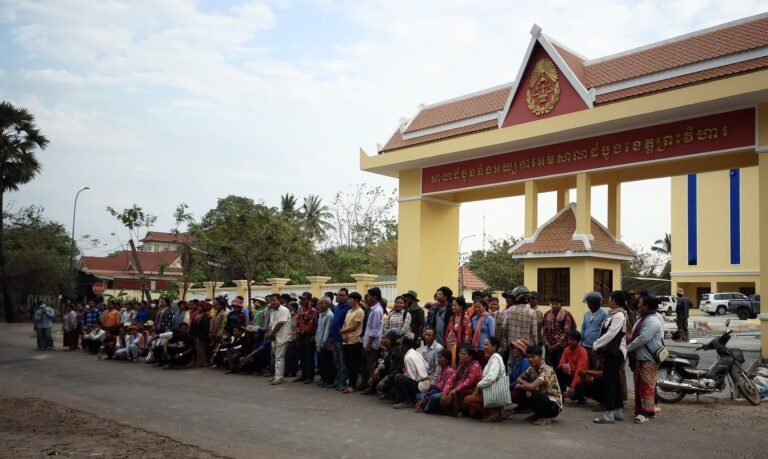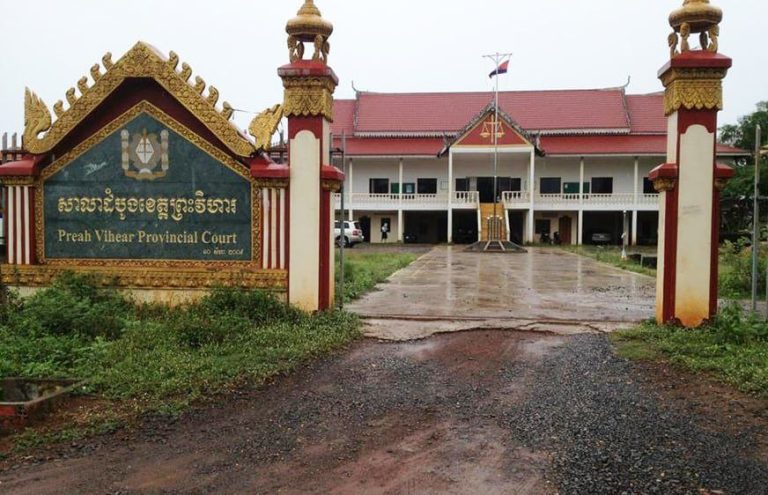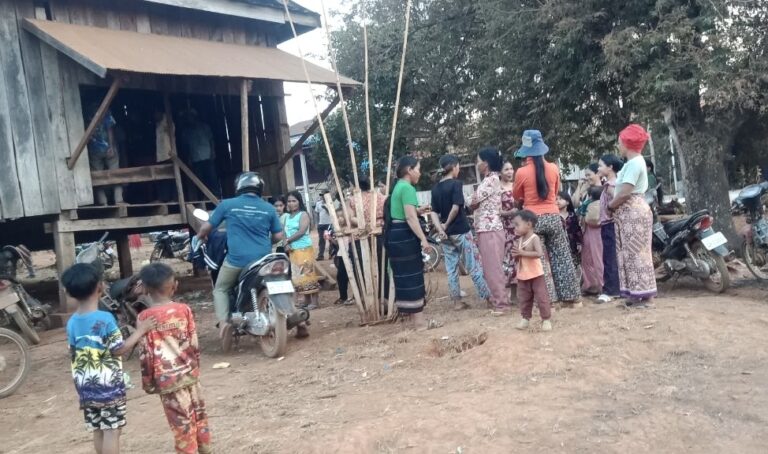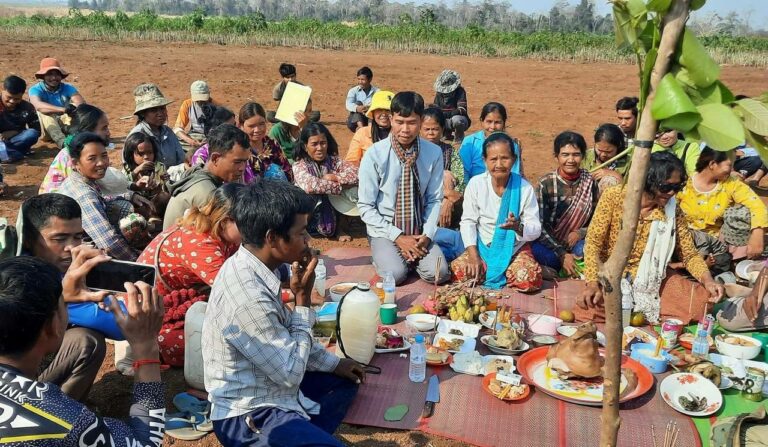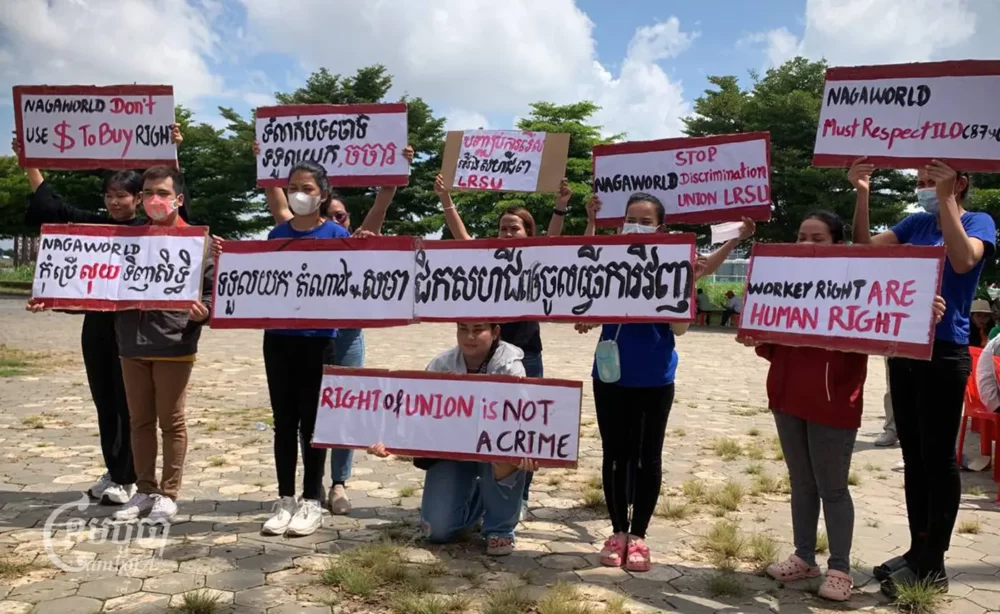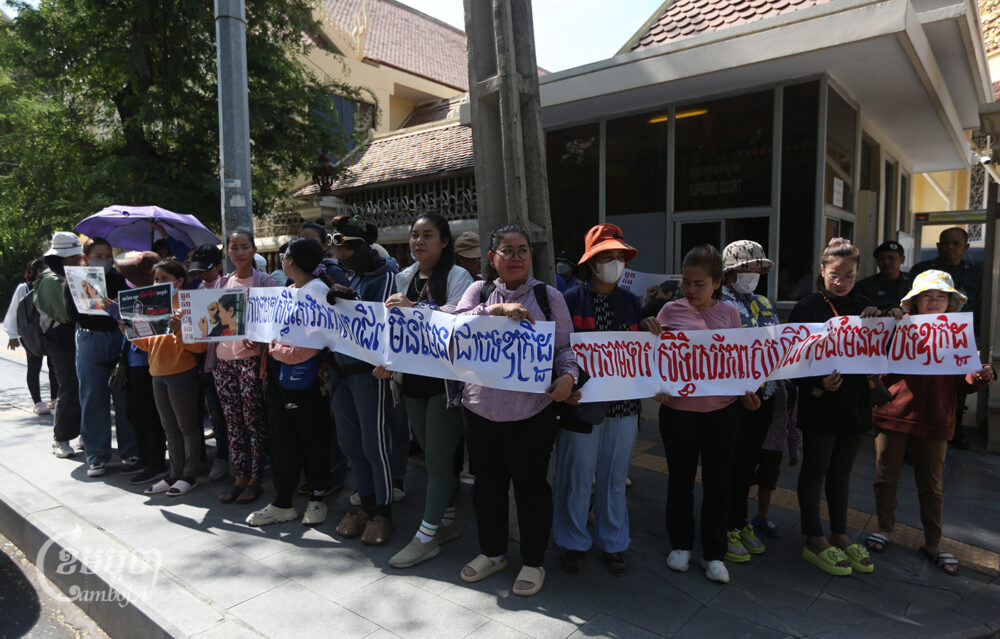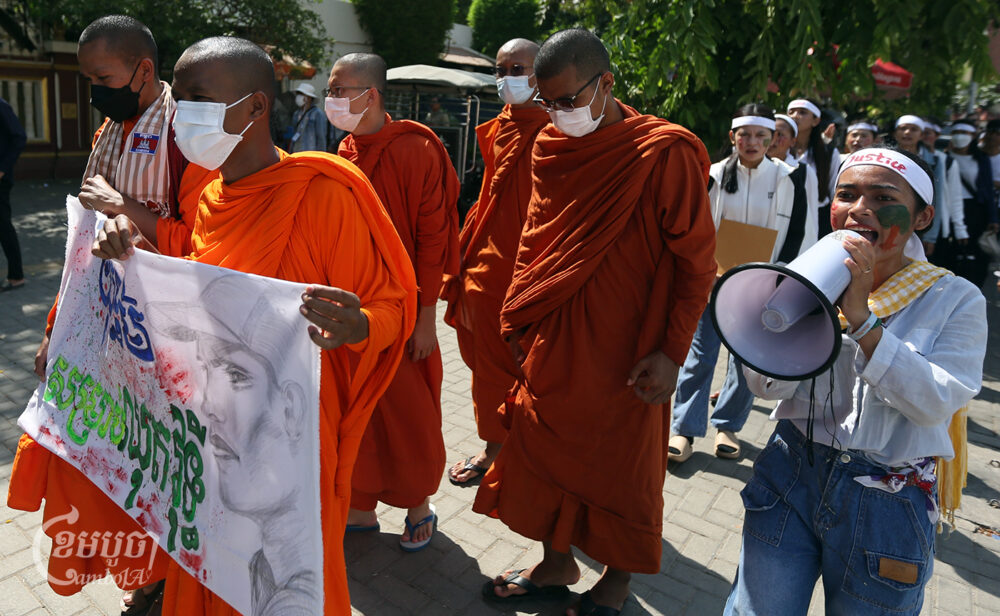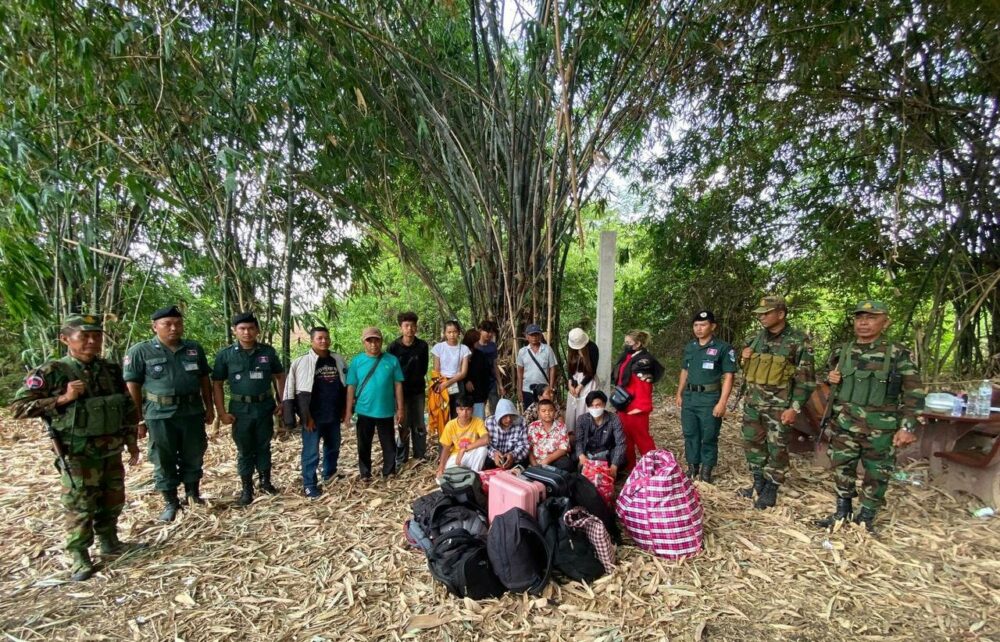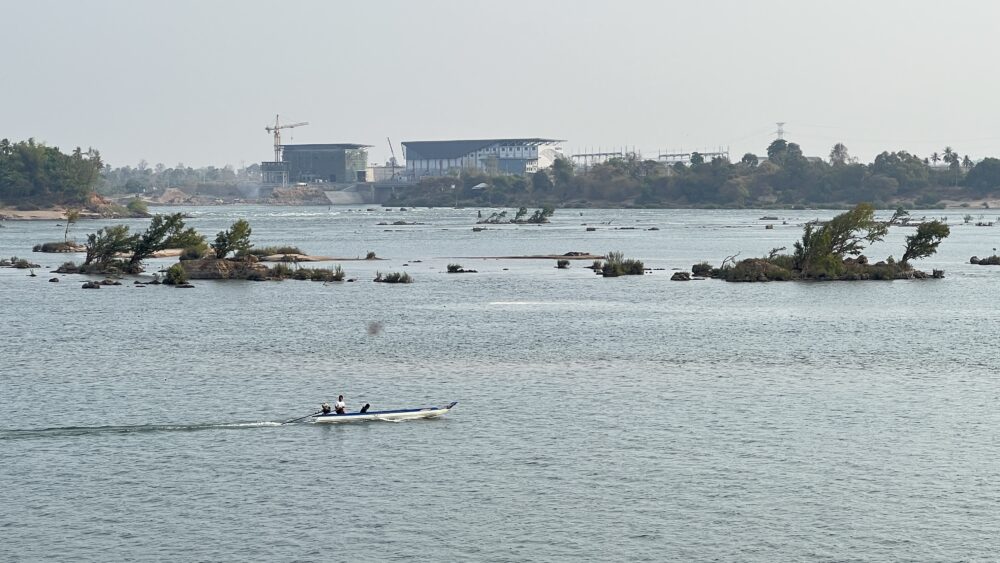A microfinance credit officer in Ratanakiri recently told me he thought Cambodia’s Indigenous communities would be landless in the next 10 years, as they sell off their land to pay off loans. His worrying prediction comes in the wake of the Covid-19 pandemic, when financial instability pushed even more people in the country to take on debt. Many local community members, including Indigenous communities, have borrowed money from banks and microfinance institutions to buy land, pay for medical expenses, build houses, fund farms, carry out religious ceremonies and pay school tuition. But many of these communities are struggling to pay back their debt.
As of 2022, there were 185 banks and microfinance institutions that were members of the Credit Bureau of Cambodia, including leasing companies and rural credit operators, providing loans to 4.8 million borrowers. The vast majority of the microloans issued in the country are held by just 10 institutions. In 2020, the average microloan in Cambodia was around $4,000 while the GDP per capita was about $1,500 that same year. Cambodians have more than $16 billion in microloan debt.
In Ratanakiri province, Indigenous community members are seriously concerned about the impact of the debt on the community, fearing the loss of land and the uncertain futures of their children. Around 80% of Indigenous families in Kam and Kres villages in O’chum district are indebted to microfinance institutions, with an average loan size of $1,000 in 2021, which has since grown.
The purported purpose of microfinance loans is to assist small-scale business start-ups, to support poor people in rural areas, to relieve families of financial burdens, and especially to advance the livelihoods of poor and subsistence-based farmers. However, many of these institutions have become profit-oriented and have implemented policies that violate human rights, including policies which result in pressured land sales.
Cambodia’s Pathway to Microfinance
In the 1990’s, in the aftermath of the long civil war, Cambodia started to rebuild its economy by launching economic reform policies. The financial sector played a key role in this process by fueling economic activities through loans, particularly loans given to people in rural areas. The banking system and microfinance institutions thus began having an increased role in the country’s development process. Many of these microfinance institutions evolved out of NGOs that provided microloans to fill in the gaps in the banking sector.
In 1999, the Law on Banking and Financial Institutions went into effect, allowing microfinance institutions to transform themselves into commercial institutions regulated by the National Bank of Cambodia. The Royal Government of Cambodia proclaimed 2006 as “a year of microfinance in Cambodia,” highlighting the role that banks and finance institutions play in alleviating poverty in rural areas and ensuring economic sustainability. Since then, the Cambodian microfinance sector has ballooned.
As of 2020, there were 10 financial institutions actively operating in Kam and Kres villages. The NGOs Licadho and Equitable Cambodia filed a complaint against six microfinance institutions funded by the International Finance Corporation (IFC), a member of the World Bank Group. The complaint was filed to the IFC’s watchdog, the Compliance Advisor Ombudsman. The watchdog is currently conducting its investigation, but its initial assessment found “preliminary indications of harm” to borrowers and violations of the IFC environmental and social standards.
Right to Relief, a report conducted by Licadho and EC, found that 90% of the Kreung Indigenous community members living in the two villages have fallen into heavy loan debt. These communities are dependent on traditional rotational agriculture, the cultivation of seasonal vegetables and cashew trees, and access to non-timber forest products for their daily livelihoods. On individual loans, community members use their housing and farming land titles as collateral.
Not only are there loan debt issues, but these Kreung communities have also been impacted by an ongoing land conflict with Hoang Anh Gia Lai, a Vietnamese rubber company. The company took over their farmland, spiritual forests and burial grounds starting in 2010 without prior consultation, which cut these communities off from their main sources of income, according to the NGO Inclusive Development International.
These issues have had negative consequences for Indigenous Kreung communities. Residents reported having trouble sleeping, not having enough food to eat and selling possessions and land to pay off loans. Residents have migrated to find work, and some locals report that children are working to support their families. In addition, the behavior of credit officers has been reported to be aggressive during their loan collection practices. According to the NGO Licadho, loan collectors have pressured community members to borrow money from private lenders and threatened them with arrest or legal complaints if they continue to delay payments.
“When I was five days late, the [credit officer] came to my house and said, ‘if you can’t find money, you will have to sleep at the police station.’ I was afraid because my child is only one year old,” one member of the community told the researchers involved in the Right to Relief report.
The report also notes that about seven families in Kam village had to sell their land to repay microfinance debt during Covid-19. According to a 2022 study funded by the German government, about 167,000 Cambodian households across the country sold their lands to repay loan debts over the five previous years.
Besides land sales, economic stress from over-indebtedness may be one cause of illegal logging activities within the community-protected area in Ratanakiri. CamboJA News reported that at least 527 Jarai families in Lom village, Pok Nhai commune, Oyadav district have borrowed money from financial institutions, with average loans ranging from $5,000 to $20,000. Residents reported resorting to cutting down trees to sell timber goods to customers across the border in Vietnam in order to repay their debts.
Potential Interventions for the Microfinance Industry
Without adequate attention to these issues and policies that can help to alleviate the loan debts, Indigenous communities will continue falling into debt traps and will face increasing landlessness. There are steps that national financial institutions, the government and international lenders can take to relieve heavy loan debts or to prevent individuals from undertaking debt which will harm them in the long-term.
First, banks and microfinance institutions should provide microloans to residents without them using land titles as collateral. The bank policies for these loans should be designed to meet the needs of the poor by providing a very small amount of money with a low interest rate. This system would assist Indigenous community members in improving their livelihoods, which often rely on natural resources, while still ensuring they can pass along their land to their children. With this approach, financial institutions should clearly define the eligibility criteria, such as very simple income-generating activities with outlined financial management plans.
Second, more training should be offered to microfinance institutions about ethical loan practices, with a specific focus on the issues facing Indigenous residents. The government should implement training programs that discourage predatory behaviors by credit officers, such as pressuring community members to take out loans or threatening people late on payments with legal action. As many Indigenous communities and Cambodian people in rural areas are illiterate and may lack financial education, the government, in particular the National Bank of Cambodia, could also initiate financial classes that inform the public on personal finance, business skills and risk management.
In addition, the government should consider implementing a debt moratorium for a certain period of time to relieve those who are heavily indebted. Thailand’s cabinet approved a suspension of principal and interest payments for three years for farmers last September, and Cambodia should watch the results of this measure closely to determine how such debt alleviation might work in Cambodia.
Finally, international lenders, such as the World Bank’s IFC, Germany’s DEG, and the Netherlands’ FMO, should strengthen their policies to protect human rights and the environment by conducting further research into this sector. Their policies must ensure that their loan recipients respect their performance standards and the United Nations Guiding Principles on Business and Human Rights, and include strong due diligence processes.
Indigenous communities are some of the most marginalized populations in the country, and they deserve special attention and consideration when it comes to debt. They maintain traditions through management of forests, land and natural resources to make a living, and these practices have been handed down from generation to generation. Without a reexamination of the policies related to credit and debt repayment, they are at risk of losing their cultures, identities and livelihoods, along with their land.
Rithy Bun is a young research fellow at Future Forum who has many years of experience working with Indigenous communities.


